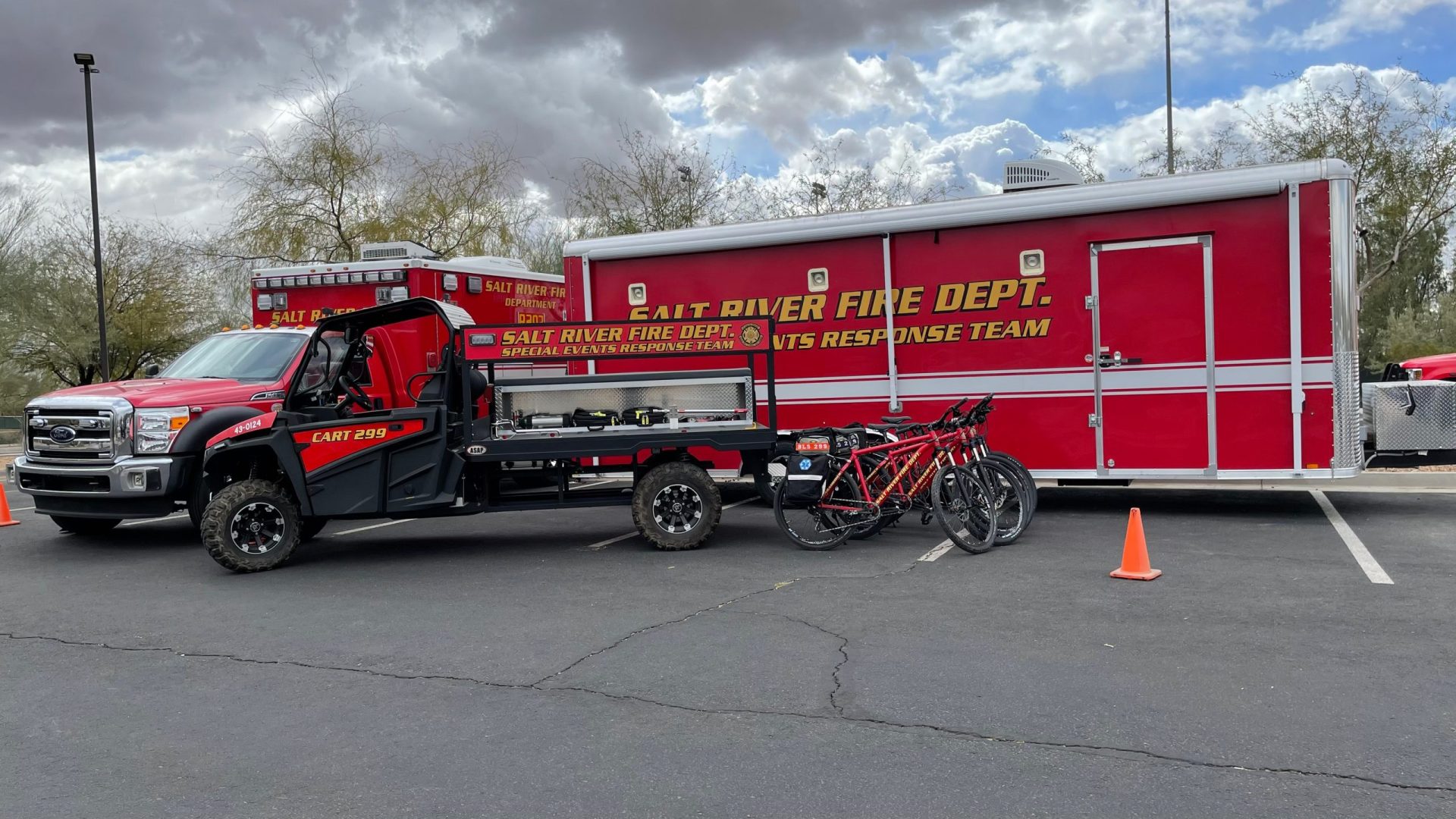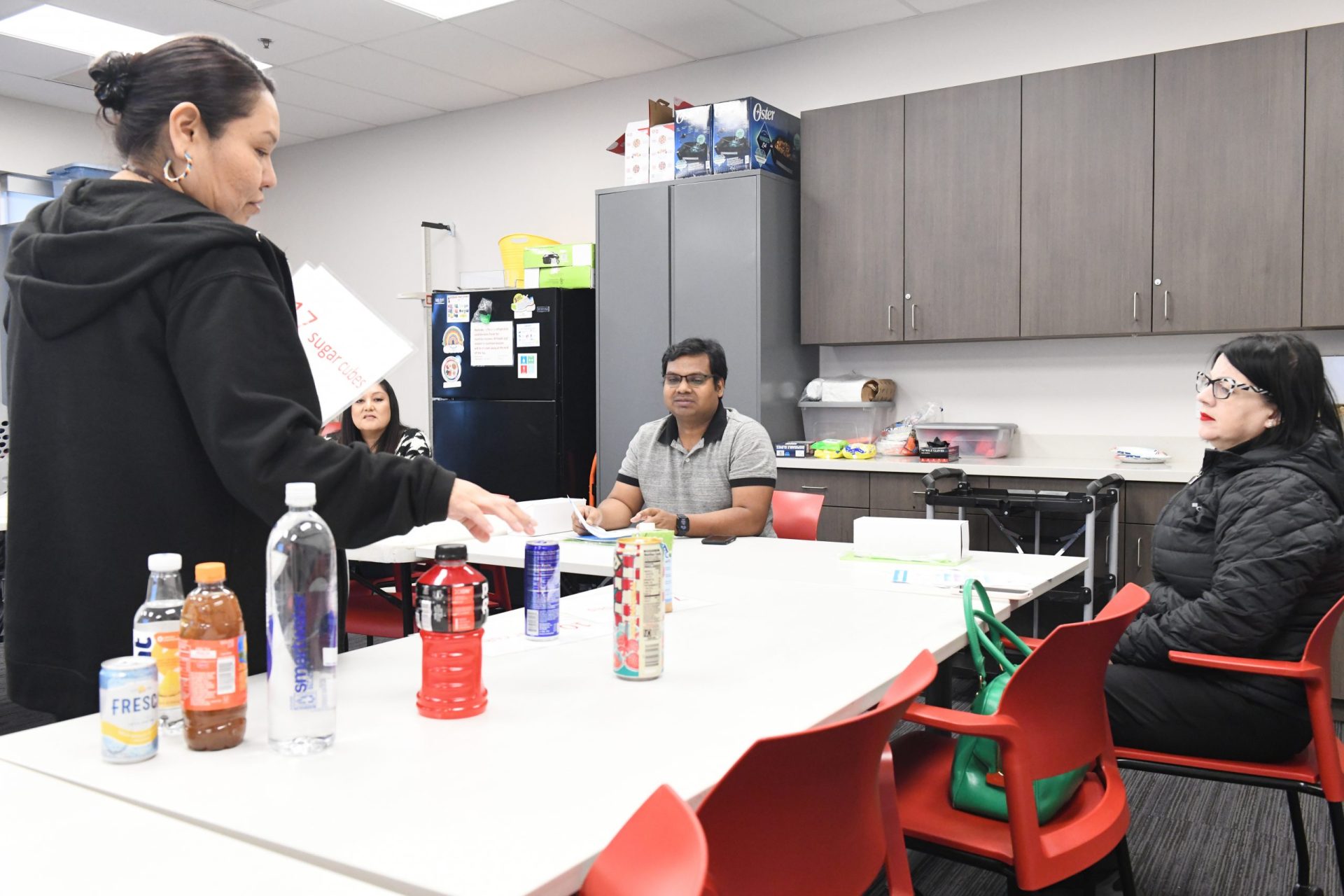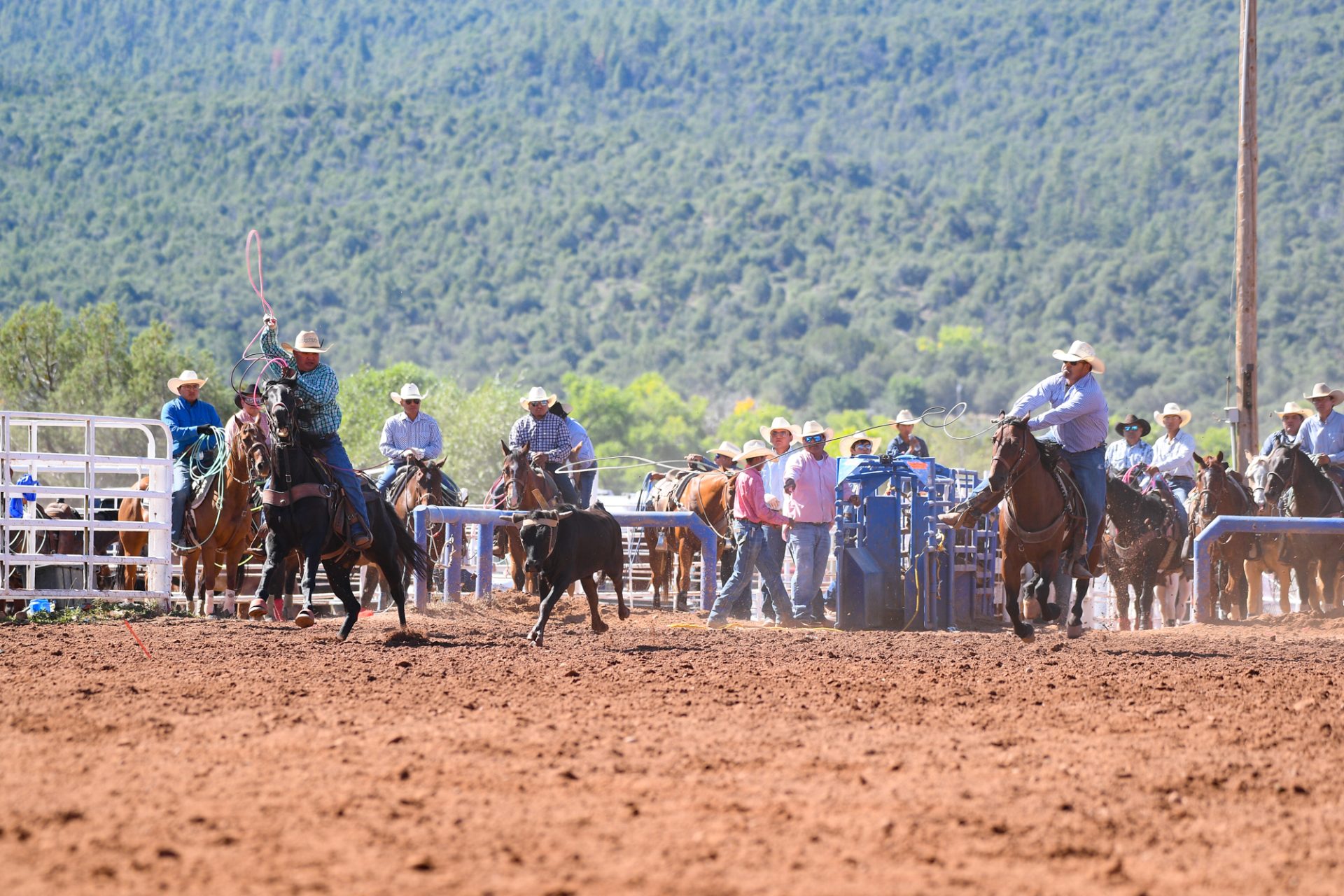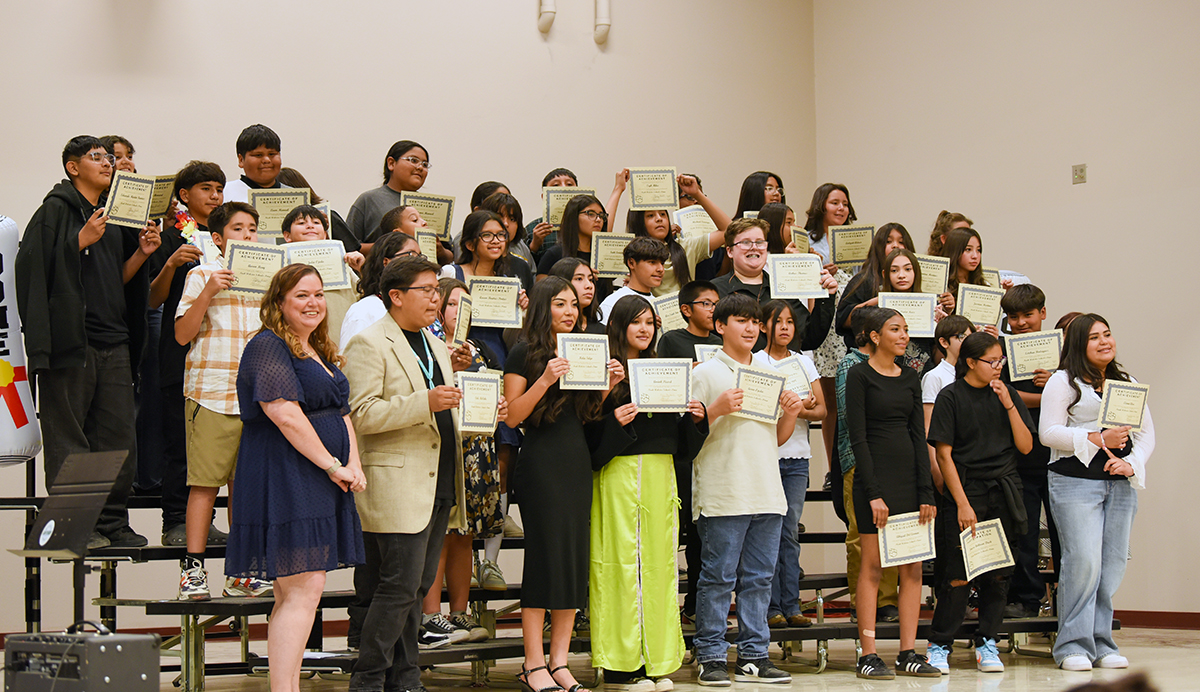VIEWS: 3035
December 3, 2021A Day in the Life of a Salt River Firefighter
There is a certain charm to Salt River Fire Department (SRFD) Station 291 on Osborn Road. Built in 1981, it is the oldest of the four fire stations in the Salt River Pima-Maricopa Indian Community.
Being in the heart of the SRPMIC’s government operations and central to many residences and businesses near the freeway, Station 291 usually gets the most emergency calls.
As you walk into the station, you will often see the crew sitting on recliners in the living room, waiting for an emergency call while watching television and eating a meal that was cooked in the adjacent kitchen. When I visited, the crew was watching the classic holiday movie “Elf.”
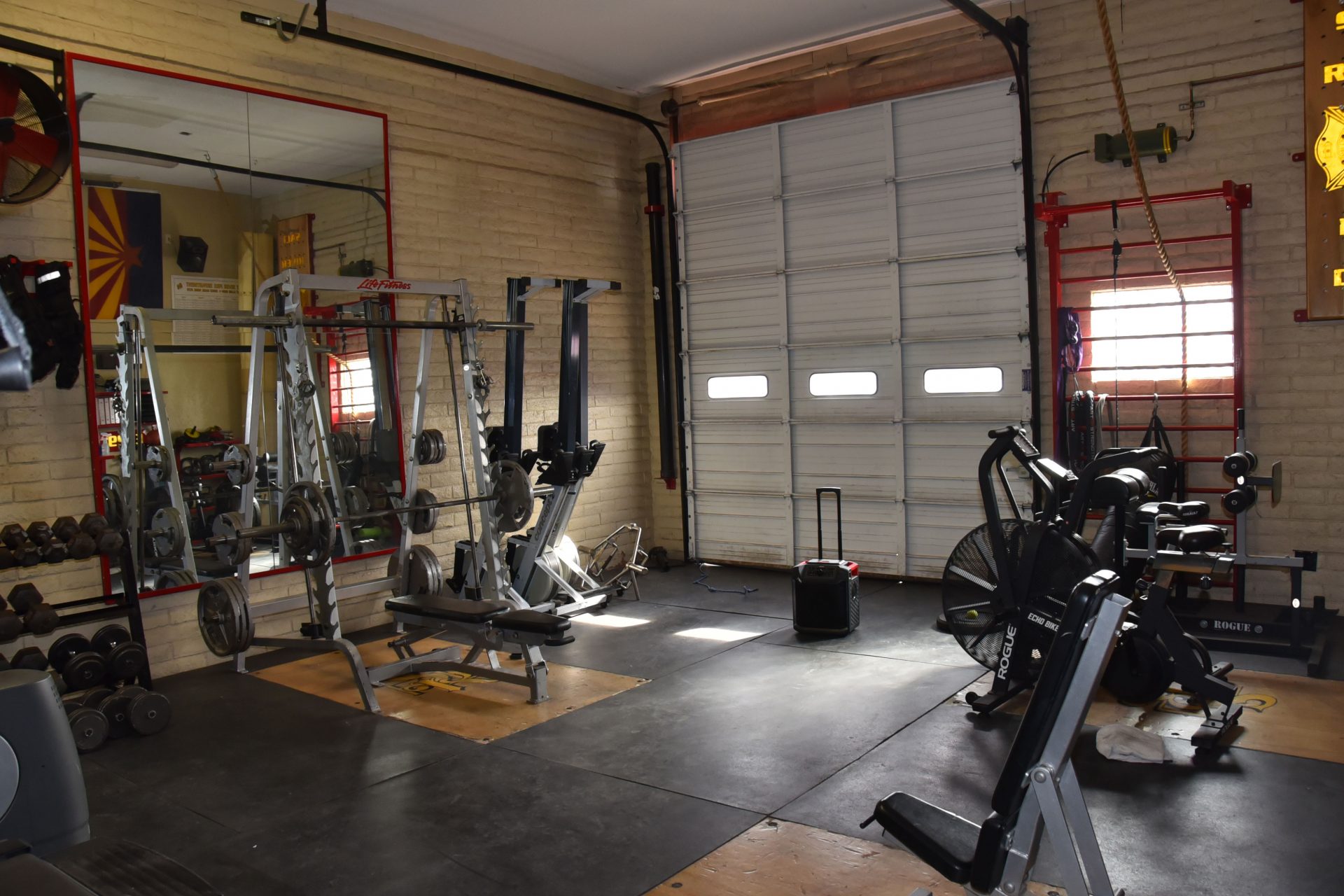
The stations are a second home for the first responders, who work about three days a week in 24-hour shifts.
Every morning at 7:45, a new shift, or battalion, comes in to relieve the crew who came in at 7:45 a.m. on the previous day. There are three shifts total, A, B and C, and all shifts rotate between the stations. A battalion chief oversees the stations.
The standard crew number per station at any given time is six in total; however, due to staffing issues, there were five per station when I visited.
Every station has a captain, an engineer and firefighters. Engineers drive the fire trucks, but they can also fill in as firefighters.
Firefighter and paramedic Jared Miles, who was the acting captain on the day I was at Station 291, gave me a tour of the station, starting at the computer room. This is where paramedics, firefighters, engineers and captains check their email and enter their reports and information into incident software that is similar to what the Salt River Police Department uses.
When there is an emergency call, a large screen above the computers will display the address of the incident, which unit number is dispatched, and the incident type, whether it is an emergency medical services (EMS) call, a house fire or a motor vehicle incident.
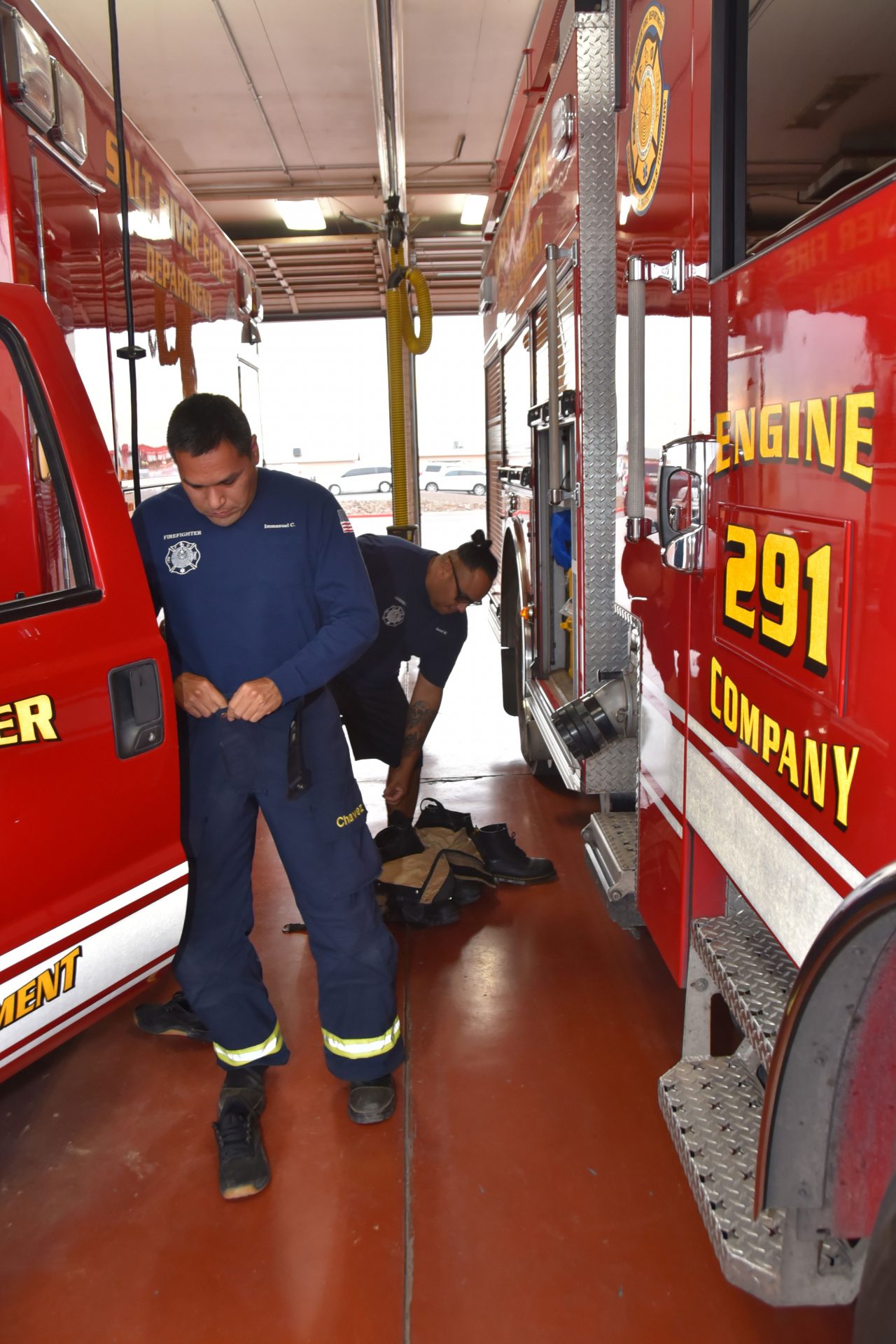
Because each shift lasts 24 hours, there are sleeping quarters, or bunks, available for crew members to rest. In the case of an emergency call while they’re sleeping, a light bar installed in each bunk will light up in bright red and a sound will come from a speaker next to the light.
“We now have what they call ‘heart tones,’” said Miles. “[The previous tone system] that was being used contributed to an increase of heart attacks in firefighters because the sudden high-pitched sound [caused] a [sudden] jolt of energy. Years of [exposure to] that sound can cause cardiac issues. Heart tones start low and gradually get louder.”
There are also speakers in the living room, the kitchen and the weight room. The weight room was converted from the old bay that used to house fire trucks, and it still has masonry walls and garage doors for an old-school feel.
Miles then showed me the hose tower attached to the station in the back. The hose tower is a tall brick structure similar to a bell tower that is used to hang the long firehoses to dry.
As we waited for an emergency call, Miles took me to the bay to show me what the scene looks like when firefighters prepare for a response.
“At the beginning of the shift, everyone knows where their positions are,” said Miles as he was putting on EMS boots and “response pants,” a type of personal protective equipment.
“The SRFD is unique in the way that we have two sets of gear. You will have your original set of gear; that is your newer version. The second set is your older set. The reason [for the two sets] is to reduce cancer-causing carcinogenic exposure. In the fire service, cancer is huge. It’s the No. 1 cause of death of firefighters.”
Miles said that the current rate of cancer diagnosis for firefighters at the SRFD is one crew member per year.
After a house fire, first responders will take off their gear, throw it in a garbage bag and place it in the back of the fire truck. The gear is then immediately taken back to the station to be cleaned in large industrial washing machines.
During the late afternoon, some of the crew headed out to grab food. Firefighters can either bring their own meals and ingredients to heat up or cook in the kitchen, or some will pick up take-out and bring it back.
Just as the movie “Major League II” started on the television, an emergency call finally came in over the speakers.
The crew put on their gear and the engineer started the fire truck and opened the bay doors. The captain hopped up into the front passenger seat as I joined a firefighter in the back cab of the truck and buckled up. The other firefighters got in the ambulance, and the whole crew took off in what felt like just a few seconds.
I put on a pair of communications headphones hanging in the truck and listened in on the call. The truck headed west on Osborn Road. Then another dispatch came through saying that emergency crews were no longer needed for the call.
The fire truck turned back to the station and one firefighter joked to me, “It’s the curse of a ‘ride-along.’” However, I was relieved that at least nobody was seriously injured. The bay doors opened up from the back and we pulled back into Station 291 to park. The adrenaline began to wear off as the crew exited the vehicles, took off their gear and breathed a collective sigh of relief until the next call.

